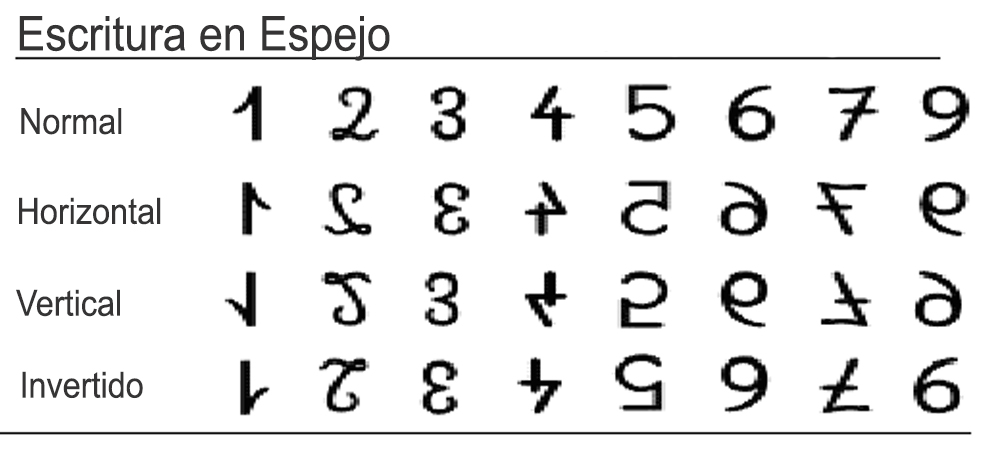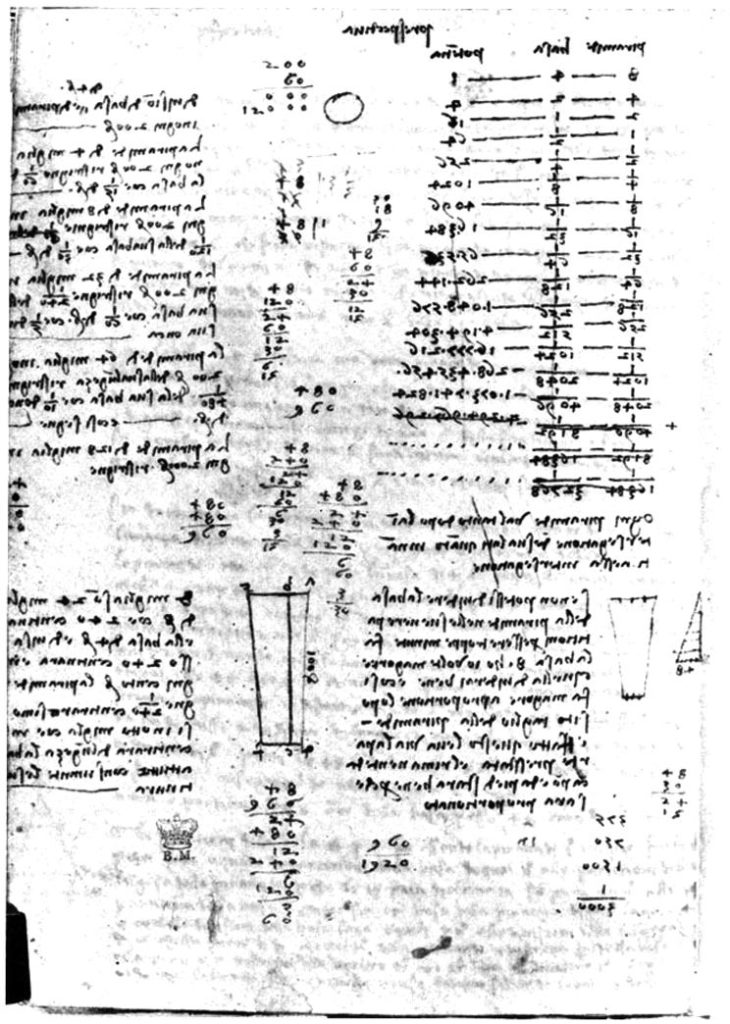- Get link
- X
- Other Apps
Mirror writing is a very ancient and relatively common phenomenon in children, left-handed people, and languages that are written from right to left. Although we tend to see mirror writing as an awkwardness or a problem that scares many parents, it is actually an extraordinary "feat" as it is very difficult to write backwards, especially whole words or sentences.
What is mirror writing?
The term "mirror writing" (Spiegelschrift) was introduced by Buchwald to refer to writing that runs in an opposite direction to normal in which even the individual letters are reversed.
Mirror writing, or mirror writing, refers to the tendency to write letters or numbers (even whole words or paragraphs) backwards, as if reflected in a mirror. In fact, the characters are correct when looking in the mirror.
Horizontal mirror writing is the most common, but there are also cases of vertical mirror writing, which appears correct only if we look at the numbers or letters by placing a mirror above or below them. This way of writing is even more impressive when the letters are in italics.

Mirror writing in children
Mirror writing is a relatively common "problem" in children aged 5 to 7. Obviously, many parents are alarmed when they see that their children have mirror writing (perhaps because they confuse it with dyslexia), but the truth is that it is a normal phenomenon in children who are learning to read and write.
The two reasons why children write in the mirror
- Laterality
The school phase is a crucial period for establishing laterality when children begin to show a greater preference for the use of one hand or the other. However, the little ones sometimes show cross laterality or left handed laterality.
It is worth clarifying that the most natural direction left-handed people use when writing would be from right to left (just in contrast to right-handed people and our writing system). Therefore, it is not surprising that children have to go through a period of training before they understand this direction and incorporate it into their writing.
In fact, most children pass the mirror writing phase without much difficulty. Although of course, it is recommended to keep an eye on the development of the reading.
- Visual perception
When the child learns to read and write, his visual system must be mature enough to perceive the symmetries between the letters and, at the same time, he must have developed a basic system of spatial orientation. This way he will understand the symmetries between particularly complex letter pairs such as "bd" with changes to the right and left or the letters "bp" with changes at the top and bottom.
At the age of 5 or 6 some children have a hard time perceiving these symmetries, so they usually turn the letters in isolation as they do not correctly perceive the differences between them. Some not only reverse certain characters, but also entire words or phrases. However, these problems should normally be overcome by the age of seven.
In any case, it is important to keep in mind that mirror writing is usually not an indicator of slower intellectual development, as was previously thought. Recent studies at Harvard University and the University of Lorraine have found no significant differences in intelligence between children of the same age who write normally and those who write in a mirror fashion.
Therefore, although mirror writing is not evident in all children, it is not a systematic phenomenon; it can be said that it is a normal phase that some children go through when they learn to write. With a little extra help this "problem" is quickly solved.
Is mirror writing hereditary?
Some Australian researchers have recently speculated that mirror writing could be a hereditary condition. These psychologists placed an Aesop's fable in the local newspaper and asked anyone who could read it in less than a minute to contact them. Obviously, the text was written in a mirror image.
So they found 10 adults who had mirror writing and were able to read it fluently. The funny thing was that these people's children also had mirror writing and almost all of them were left-handed.
These researchers speculate that there may be a gene involved in the organization of language centers in the brain, which would also be responsible for mirror writing. This idea would not be completely absurd since it has been proven in cases of synaesthesia , although for the moment it is still only a hypothesis.
Mirror writing in adults
Although mirror writing may be normal in the first few years of life, when it appears in adulthood it is usually a symptom of a brain injury in the dominant hemisphere. Mirror writing has been observed in people with schizophrenia, multiple personality, Alzheimer's and Parkinson's.
Indeed, specialists from the Department of Neurology of the Beijing Hospital propose that the appearance of mirror writing in the elderly should be considered as a factor that predicts a subsequent cognitive decline.
It can also appear after a stroke, although in these cases it is usually transient. 93% of these cases are due to damage to the left hemisphere and the need to use the non-dominant left hand due to the motor problem in the right hand, as confirmed by neuropsychologists at the University of Edinburgh.
One of the theories attempting to explain mirror writing in adults indicates that it could be that the person loses consciousness of the direction of the learned actions. This hypothesis, called "directional apraxia" would indicate that we remember the shape of the letters but not their direction since both processes would be governed by different areas of the brain.
Is voluntary mirror writing synonymous with creativity?
Mirror writing has also been associated with increased creativity over the years. Probably this connection was made on the basis of cases of geniuses like Leonardo Da Vinci, who wrote all his personal notes using mirror writing so that they were indecipherable to others. It is worth clarifying that Da Vinci was ambidextrous, a condition that has been shown to facilitate the learning of mirror writing.

Lewis Carroll was another example of a famous personality who experienced spatial inversion and wrote in a perfectly mirror-like manner. It is estimated that he wrote about 100,000 letters, many of which could only be read in front of a mirror.
It should be noted, however, that Carroll suffered from epilepsy and was likely prone to perceptual disturbances. In fact, the first case of mirror writing reported in 1688 by Leutilius referred to a person who suffered from epilepsy.
Personally, I'm not aware of any recent scientific studies showing the connections between mirror writing and higher intelligence or creativity, but it's safe to assume that if someone has enough mental flexibility to learn this type of writing, they can also be very creative.
Sources:
Fischer, JP & Tazouti, Y. (2011) Unraveling the mystery of mirror writing in typically developing children. Journal of Educational Psychology ; 104 (1): 193-205.
Della Sala, S. & Cubelli, R. (2009) Writing about mirror writing. Cortex ; 45: 791–792.
Balfour, S., Borthwick, S., Cubelli, R. & Della Sala, S. (2007) Mirror writing and reversing single letters in stroke patients and normal elderly. Journal of Neurology ; 254: 436–441.
Mathewson, I. (2007) Does a mutated X-linked dominant transcriptional repressor gene explain mirror writing ability and synaesthesia? Medical Hypotheses ; 69 (2): 368-371.
Torres, L .; Ballón, N. & Mori, N. (2003) Escritura en espejo secundaria a parieto-occipital infarction izquierdo. Revista de Neurología; 37: 1112-1113
Akhutina, A. (2002) Diagnóstico y evaluación de la escritura. Revista Española de Neuropsicología ; 4 (2-3): 236-261.
Wang, X .; Cai, X. & Chen, H. (1998) Mirror writing in the elderly. Chin Med Journal ; 111 (7): 641-3.
- Get link
- X
- Other Apps
Comments
Post a Comment